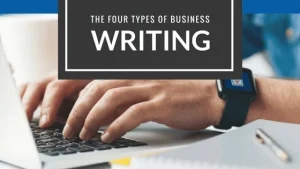The 5 Steps of Writing a Book Outline to Maximize Nonfiction Sales

Writing a book outline is one of the most efficient ways of creating a nonfiction book. It’s miles ahead of starting with a blank piece of paper and your brain full of ideas. The few hours required to structure a proper outline will save you days and weeks of effort.
But, and this is a very important but, writing an outline doesn’t guarantee that your book will perform well in the marketplace – all book outlines are not cut from the same cloth.
Writing a nonfiction book and writing one that sells are two different things, even if they take the same effort to create. This article will teach you the “secret sauce” required to produce a highly sellable product.
What Makes a Nonfiction Book Sell Well?
Like any other information product, your nonfiction book’s sales will be dependent on how you answer the following two questions:
What’s a widespread problem that afflicts a broad spectrum of people?
Naturally, we’re talking about a problem area that lines up with your expertise here. Also, the number of people has to be large enough to define a proper market.
If you only address the tiniest segment of people, even if your goals are perfectly aligned, you’ll have trouble generating sales.
How painful is this problem on a scale from 1-10?
By painful, I’m referring to psychological pain. If the pain level is unbearable (a level of 10) then people will be highly motivated to take action. Lower pain levels might not offer sufficient motivation.
If your book can advance a unique solution to the problem you’ve identified (i.e. something that hasn’t been tried by a lot of those people before) then you’re on the right path to good sales.
Now, in order to maximize those book sales, you must solve a problem that causes a pain level of 10. If your solution addresses a pain level of 5, then your book isn’t going to do nearly as well.
Below, you’ll find five steps to help you answer the above questions clearly and thoroughly:
Step 1: Know Your Audience As Well As You Know Yourself

Before you start thinking about writing a book outline, you need to develop a deep knowledge of your target audience. It’s not enough to know who these people are: you need to know them at such a deep level that you can feel their pain.
Perhaps you were one of those people in the past, or perhaps you have years of experience with clients from your target audience. If you want your book to connect with people, they have to feel that you know them and that you know their pain.
Having a solution that you think will work is not sufficient – you have to have a solution that they think will work. And the only way to know how they think is to know them at a very personal level.
Spend a good chunk of time on this first stage. Interview members of your audience, have one-on-one discussions in private where you can go deep into their psyche. This is where you’ll establish your connection when you write your book.
Step 2: Identify Your Audience’s Most Painful Problem in Your Area of Expertise
Now, it’s time to leverage Step 1 to uncover what their top pain is, in alignment with your area of expertise. You need to find out what’s at the core of their suffering. Knowing the problem at a surface level is not sufficient to sell books.
Say, for example, that you’re a nutritionist who developed a unique method for weight loss that produces excellent results, and are writing your book to help people lose weight.
You might be surprised to find out from your research in Step 1 that many of the people you talked to who want desperately to lose weight are motivated by a health scare and not by trying to fit into old clothes again.
Now, a health scare ranks much higher in the 1-10 level of pain than fitting into a pair of old jeans. So, that’s were your focus should go. Trying to help people lose weight in general won’t do nearly as well as helping people with a specific health condition.
Step 3: Help Them Solve Their Problem in a New Way

Next, your solution needs a unique angle that isn’t commonly known. If you want your book to sell, you can’t present an established solution. Your solution has to be original in the eyes of your target audience.
If your solution is something that people have heard about before, you book won’t even register on their radar, and worse yet, you won’t be able to attract the attention of the media to help you promote your book because they’re constantly looking for new angles.
“Seen it, done it, bought the t-shirt” never sells books. Even if your methodology isn’t entirely new, the way you package it and present it in your book must be new in order to get people’s attention.
For example, the book “The 4-Hour Workweek” isn’t about working just four-hours per week. It’s about following a plan devised by its author to escape the rat race, which is a level-10 problem for a lot of people. So, be creative.
Step 4: Outline Your Book to Reveal Your Unique Solution
It’s now time to talk about your book outline. Now, there are many articles about creating book outlines available, and I’ll recommend one you should follow in the next section. But the main takeaway is that your outline has to be designed to sell books.
In that sense, it has to be structured in order to reveal your solution slowly throughout your book and not in the first chapter or in the last.
You have to guide your reader to buy into your solution step by step, by appealing to their logic (your solution must make sense to them) and, more importantly, by connecting your solution to their emotions.
Pain can only be experienced at an emotional level, so your job is to use your book to connect to that pain first and then take your readers through a journey of “healing.”
Your book’s outline has to take them from the pain they’re currently experiencing to the pleasure of being rid of that pain by applying your solution.
The 10-Step Nonfiction Book Outline Creation Process
Now it’s time to write your book outline. I’ve created a 10-step process that is specifically designed for problem-solving nonfiction book authors like you.
This process will take you from a book idea to a completed and fully fleshed-out outline that you can use to write your entire book without ever being at a loss for words.
This process will also allow you to create your book’s table of contents and generate all the front and back matter that is necessary to complete your nonfiction book in a structured and efficient way.
You’ll find this entire process in the following companion article:
How to Outline a Book: 10 Easy Steps for Nonfiction Writers
Step 5: Write Your Nonfiction Book from Your Outline

The book outline that you create in Step 4 will have all the prompts that are necessary to begin writing every chapter and sub-chapter in your book.
It’ll provide you with the thought starters you need so that you never have to look at a blank page without knowing what to do. This outline will create a bridge from your mind to the paper so ideas can start flowing effortlessly.
Remember, you’re not creating anything new here; all you’re doing is transferring existing knowledge that you acquired and developed over many years down to the written page. With this process you’ll never experience writer’s block.
Next Steps
Now, writing a book is a multi-layered process. Getting your information down is one layer. Turning that information into a final product that can move the needle will take additional work on your part.
To learn the skills to create a book that you’re proud off and that also sells well, I’ve included a number of articles in the recommended section below to give you a head start.
Best of luck on your book-writing journey!
If you enjoyed this article and are in the process of writing a nonfiction book, be sure to check out my free nonfiction success guide, drawn from years of experience editing books for bestselling authors (including a New York Times bestseller) and ghostwriting for CEOs and politicians. Simply click here to get instant access.
Ben
Leave me a comment below if you have any questions or a specific need that I can help you address – I operate an author services firm that specializes in helping entrepreneurs, professionals and business owners who want to publish books as a calling card for prospects, to establish their status as an expert or to just to generate additional leads for their businesses.
Here are some related articles I highly recommend:
How to Write a Compelling Book in 12 Steps: A Must-Read Guide for Nonfiction Authors
How to Find A Book Editor That’s Perfect For Your Nonfiction Book
Learn 10 Powerful Writing Habits to Fast Track Your Nonfiction Book
The 10 Must-Have Writing Skills for Nonfiction Authors
The 7 Most Effective Writing Strategies for Entrepreneurial Authors
 Bennett R. Coles is an award-winning author of six books published through Harper Collins (New York) and Titan Publishing Group (London). He is also the publisher at Promontory Press, editor for multiple bestselling authors (including a NY Times bestseller), ghostwriter for CEOs and politicians and the founder of Cascadia Author Services, a boutique full-service firm that specializes in premium author services specifically designed for busy professionals. Our end-to-end services include writer coaching, ghostwriting, editing, proofing, cover design, book layout, eBook production, marketing, printing and distribution.
Bennett R. Coles is an award-winning author of six books published through Harper Collins (New York) and Titan Publishing Group (London). He is also the publisher at Promontory Press, editor for multiple bestselling authors (including a NY Times bestseller), ghostwriter for CEOs and politicians and the founder of Cascadia Author Services, a boutique full-service firm that specializes in premium author services specifically designed for busy professionals. Our end-to-end services include writer coaching, ghostwriting, editing, proofing, cover design, book layout, eBook production, marketing, printing and distribution.
3 responses to “The 5 Steps of Writing a Book Outline to Maximize Nonfiction Sales”
-

Some truly wonderful goodies on this web site , appreciate it for contribution.
-

You’re welcome!
-
-

Thank you for this information. It’s wonderful!
I’m starting to write two self help word puzzle books. One for people with acquired and/or traumatic brain illness. One for prison chaplaincy.
Thank you.







Leave a Reply